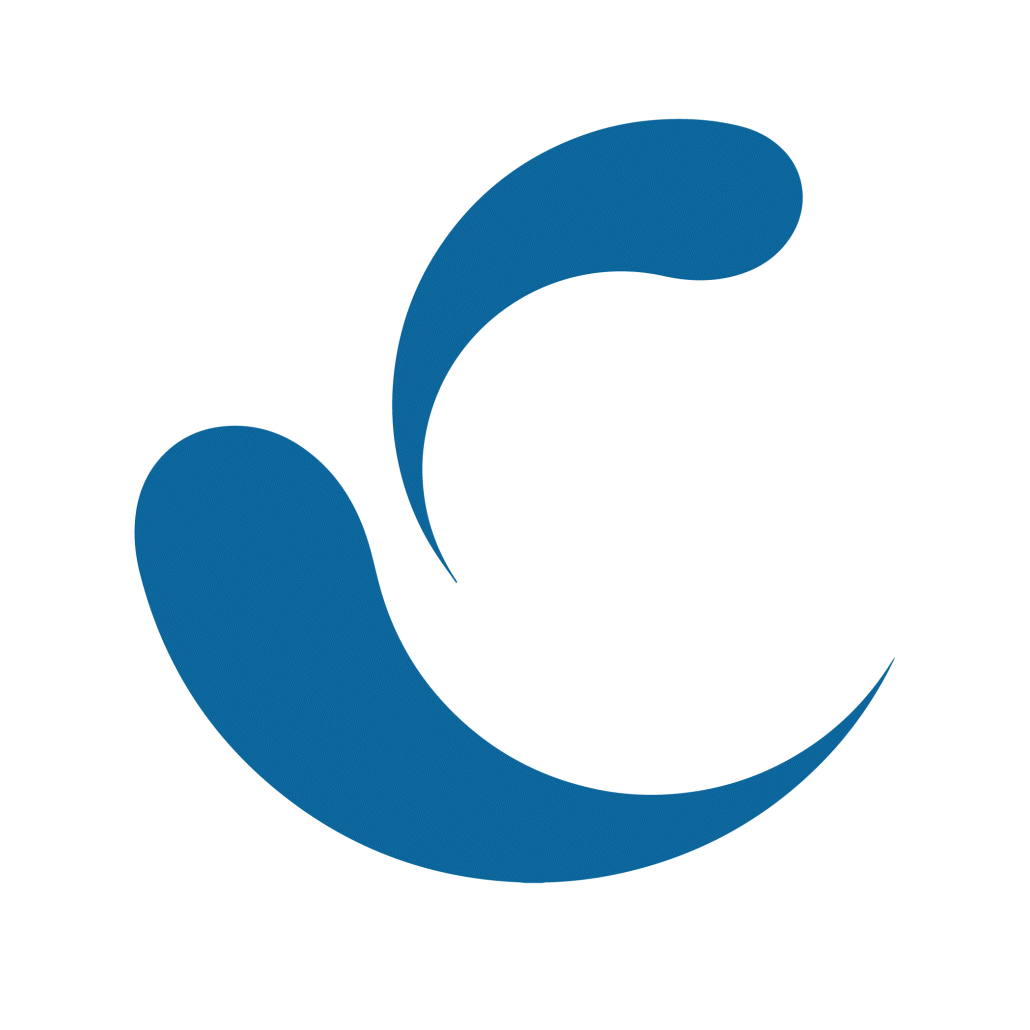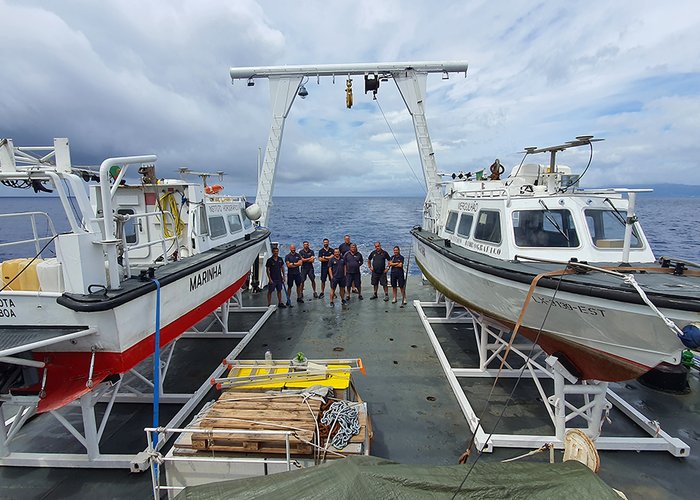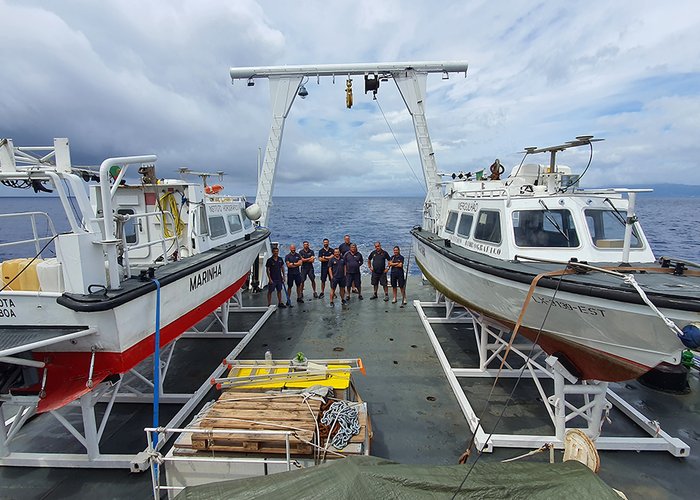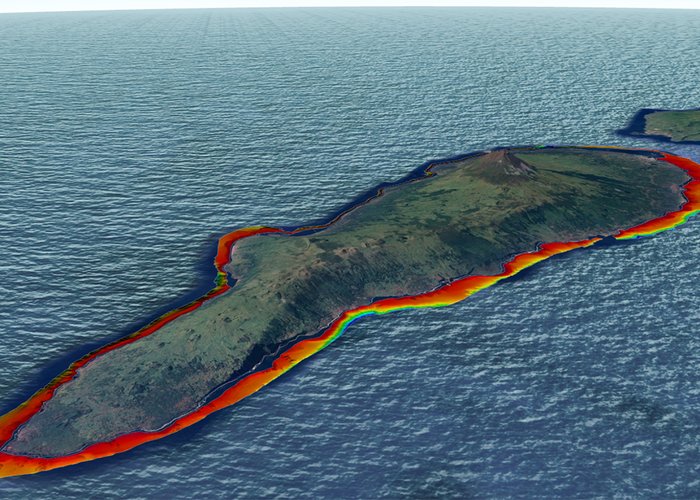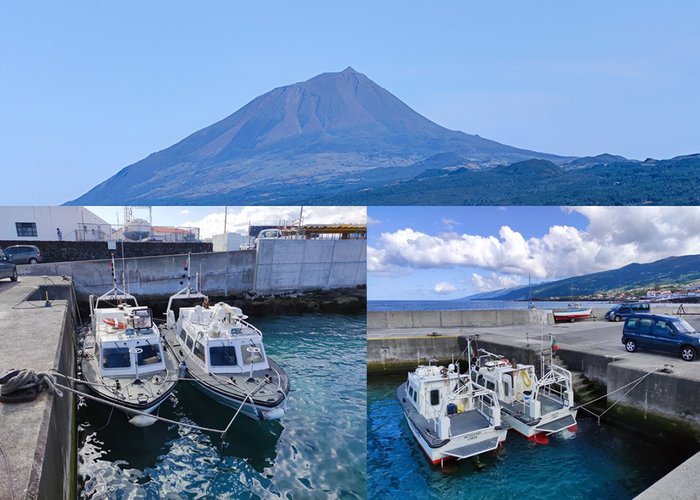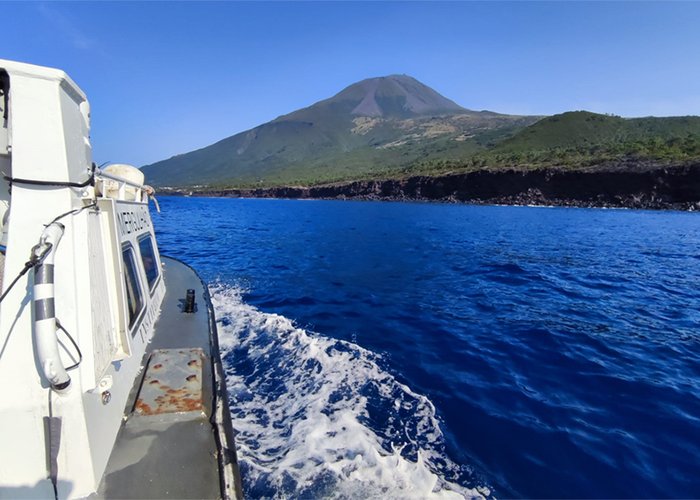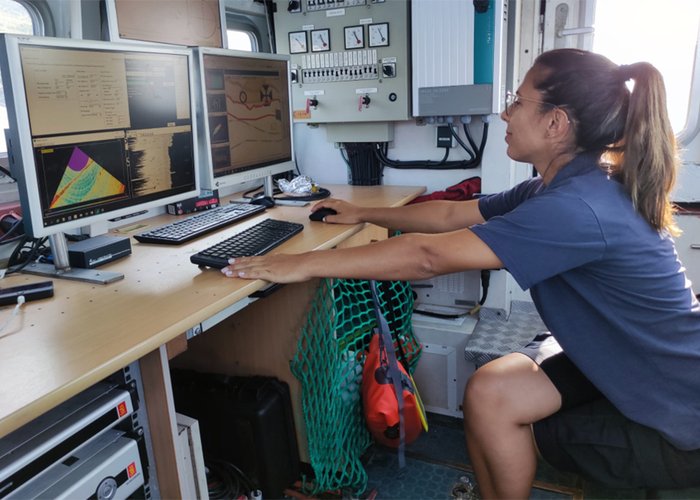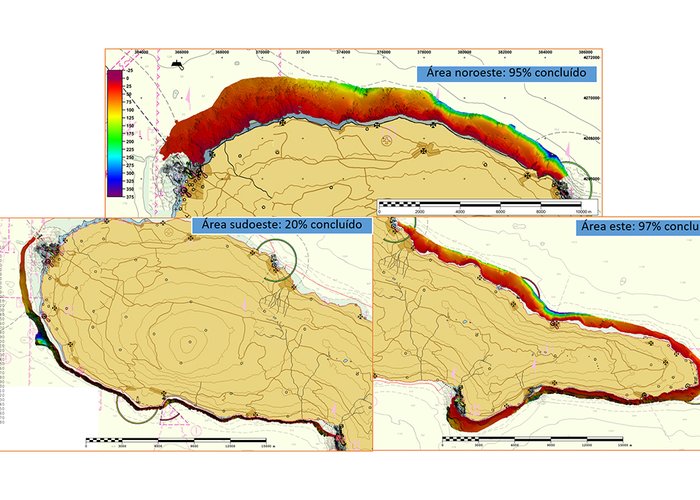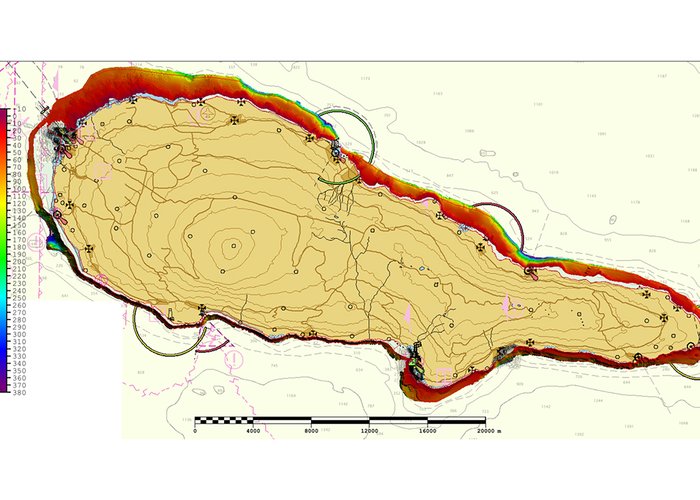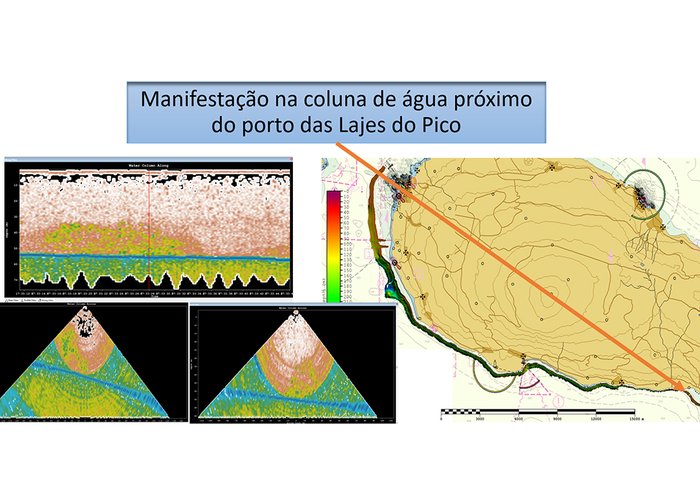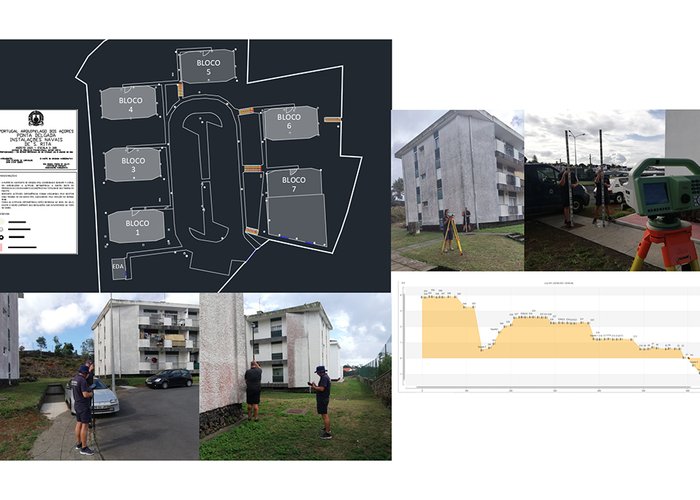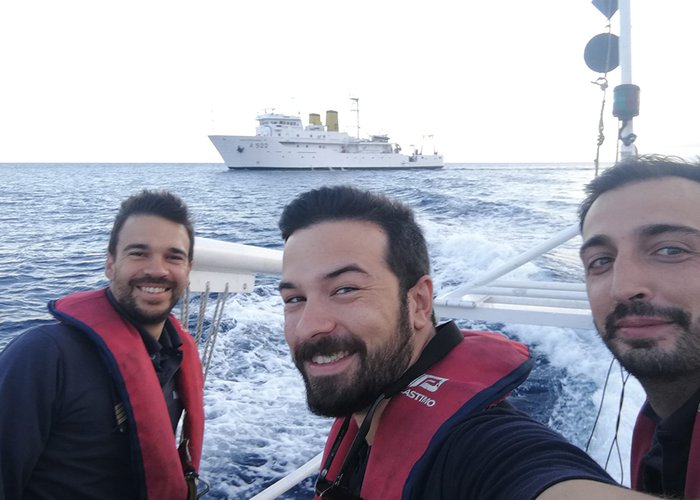Topo-hydrographic survey in the central group of the Azores archipelago
On the 2nd of September, the Hydrographic Brigade concluded the topo-hydrographic campaign carried out on the island of Pico, with 5 weeks of surveying carried out by 3 teams.
The survey was carried out with the hydrographic boat Mergulhão and reinforced in the last week and a half by the hydrographic boat Gaivota, transported to the drilling area by the hydrographic vessel NRP D. Carlos I.
The hydrographic boats are equipped with the most modern multi-beam (KONGSBERG EM2040C) and positioning/attitude (SEAPATH 380) systems today.
Pico Island is the second largest island in the Azores and its survey was enhanced by the following factors:
- Predominance of good meteorological and oceanographic conditions (METOC);
- Advantageous geographic positioning of the Pico Island safe harbors, especially the ports of Madalena, Lajes and S. Roque. Its distribution made it possible to carry out soundings between ports, increasing the efficiency of the drilling effort, reinforcing security and making it possible to take advantage of the relocation of resources to sheltered areas in days of unfavorable METOC conditions.
The drilling work took place between 10 and 350 meters deep and, although between 7 and 8 hours of drilling per vessel per day, it was not possible to complete the hydrographic survey. This was due to the limited time available for the mission and the fact that the platform adjacent to the Magdalene consists of an extensive shallow area with complex oceanography.
The data acquired was of great quality. The main causes, in large part, due to the accuracy of the positioning and attitude of our boats, with differential corrections in Real-Time Kinematic (RTK) mode added to the stations of the Permanent Stations Network Autonomous Region of the Azores (REPRAA). For vertical reference, we have a robust network of tide gauges, two belonging to the Oceanography Division of the Hydrographic Institute (Horta and Terceira) and three installed at the beginning of the mission in the main ports of Pico Island. This tide gauge network was constantly motorized and allowed, due to redundancy, to identify problems with installation/unequal geometric leveling.
During the hydrographic survey, there were acoustic manifestations in the water column in 3 locations on the island of Pico. These manifestations were observed persistently and on different days. After observing these disturbances, the water column data were recorded and processed, and its location was identified for future studies. The demonstration located near the port of Lajes stands out, as it is at a depth of 50 meters, which could facilitate its study.
At the end of the campaign, a small team of 3 elements carried out the topographical survey and geometric leveling of the Santa Rita naval facilities in Ponta Delgada.
Once the campaign was over, the boats boarded the hydrographic vessel NRP D. Carlos I, with the majority of the team, to transit to the Lisbon Naval Base.
We are grateful for the hospitality and logistical facilities provided by the Port Authority of Horta, the Madalena Fire Department, and the population in general for their excellent welcome. This was a productive, complex and exciting mission, carried out on the lush island of Pico, where the work consisted of probing the way in which the roots of the island, which holds the highest point in Portugal, are submerged.

